Fabric Focus: Make Your Interiors More Durable With Outdoor Fabric
http://decor-ideas.org 09/21/2015 00:14 Decor Ideas
Summer’s almost over, but that doesn’t mean you have to say goodbye to the carefree times you shared with friends and family on the back patio. Bring the fun inside with easygoing indoor-outdoor fabric.
Despite its sturdiness, you don’t need to sacrifice looks with indoor-outdoor fabric. Increasingly harder to distinguish from traditional indoor fabrics, indoor-outdoor fabric comes in many different forms. Wovens, prints, solid or striped, indoor-outdoor fabrics can work for you poolside, at the dinner table, in the bedroom and even as window sheers. Learn more below about the magic behind their tough-as-nails persona, different applications and considerations like cleaning, sewing and cost.
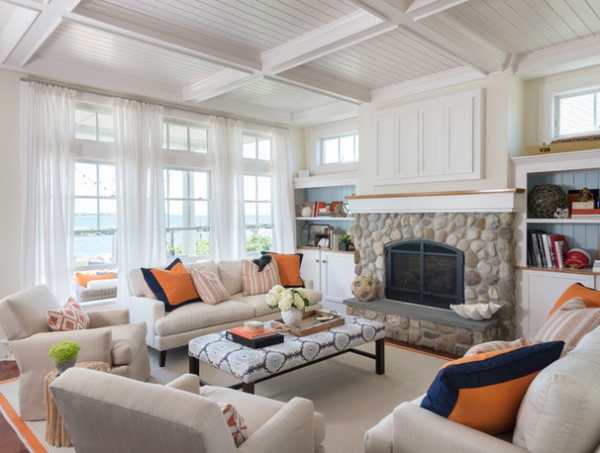
On a recent trip to the Decoration and Design Building in New York City, I was struck at the growing number of indoor-outdoor fabrics on the market — and how gorgeous they were. Woven textures, intricate and graphic looks, trendy designs … indoor-outdoor selections have evolved from their limited striped-or-solid forbears.
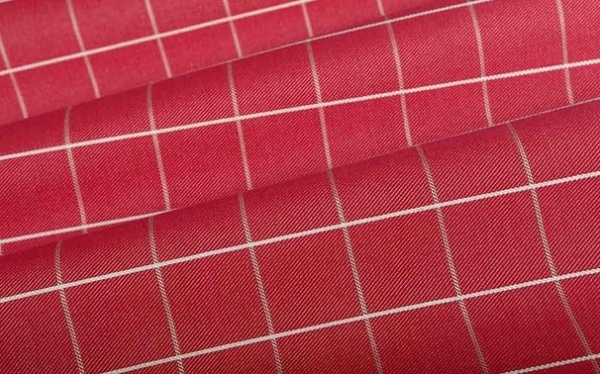
What Is Indoor-Outdoor Fabric?
Indoor-outdoor fabric is made of synthetic fibers, such as acrylic and polyolefin. What’s special is that it’s not dyed like conventional fabric, in which the fiber or the whole piece of fabric is dipped in a vat of dye. Leah Shearer, a spokeswoman for Sunbrella says, “In fact, we do not use dyes at all. Highly UV-resistant pigments are mixed in before it even becomes a fiber. Fiber is then cut, baled, blended, spun into yarn and woven into fabric.” This process is called solution dying.
The color is part of the fiber, so solution-dyed fabrics have great colorfastness in light and are resistant to crocking, which is color rubbing off. Plus they hold up to bleach (yes, bleach!), perspiration and washing, says Allison Ruddick of Duralee.
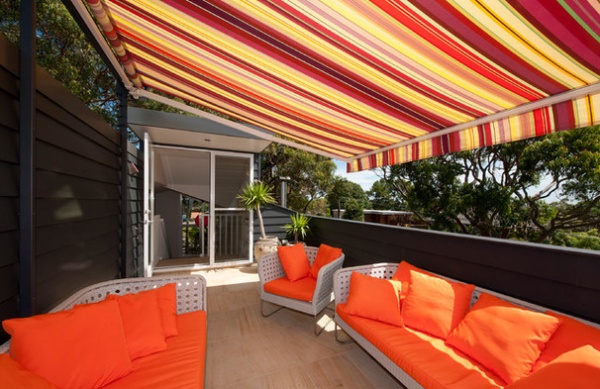
Types of Indoor-Outdoor Fabrics
Shade and marine fabrics. Awnings and shades were indoor-outdoor fabric’s first foray into the world, in the early 1960s, followed by fabrics for marine use starting in the 1970s. Introduced by Sunbrella, these were the backbone of the indoor-outdoor fabric market and the catalyst for where the market is today.
Now there’s a bevy of fetching colors and patterns to choose from, like the snazzy striped awning fabric shown here. Shade and marine fabrics are labeled as such in Sunbrella’s line and, Shearer says, still stick to a basic smooth-woven construction to ensure they repel water and breathe adequately. They also have a topical finish specifically designed for these types of installations, which require a stiffer body to keep the fabric relatively flat. So, unlike some of the fancier textured upholstery fabrics, awning, shade and marine fabrics have remained fairly basic.
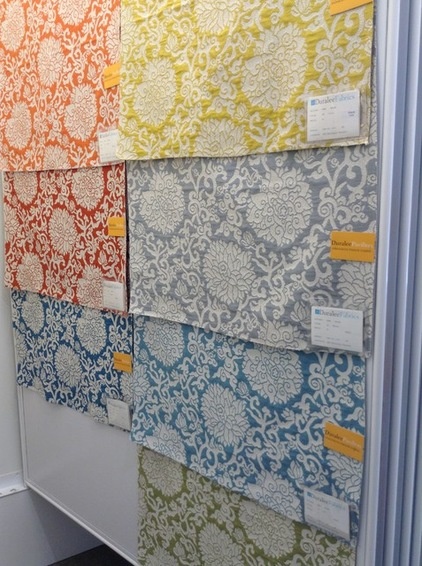
Wovens. Just like traditional upholstery fabrics, like damasks and such, there are indoor-outdoor fabrics that are woven on jacquard looms to create patterning, versus being printed.
The example shown here, called Mums, in Duralee’s indoor-outdoor Pavilion collection, is a striking woven fabric. Ruddick says the high-performance fabrics in this collection maintain the soft hand and texture of regular indoor fabrics.
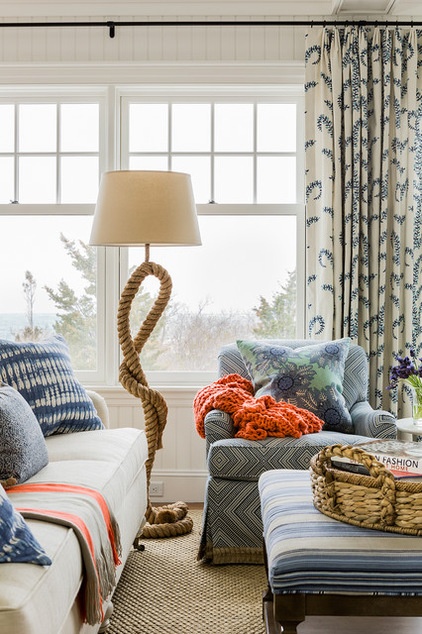
Tortola, a textured woven indoor-outdoor fabric from Schumacher, covers the chair shown here. It looks pretty and spiffy, and doesn’t ring of the indoor-outdoor fabric of yesteryear.
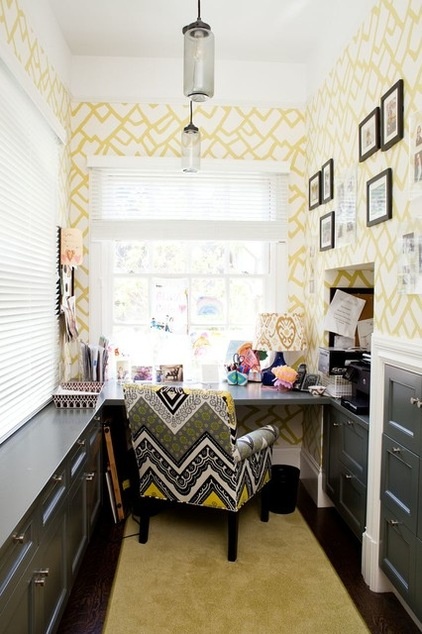
Prints. The majority of indoor-outdoor fabrics that aren’t solid-colored have designs printed on with UV-resistant dyes. Like the awning and marine fabrics, they have a smooth fabric construction but are suitable for cushion covers, pillows, drapery panels and furniture upholstery, inside or out.
Here, a jazzy indoor-outdoor fabric by Schumacher covers a desk chair.
Fabric: Tangier Frame in Driftwood, Schumacher
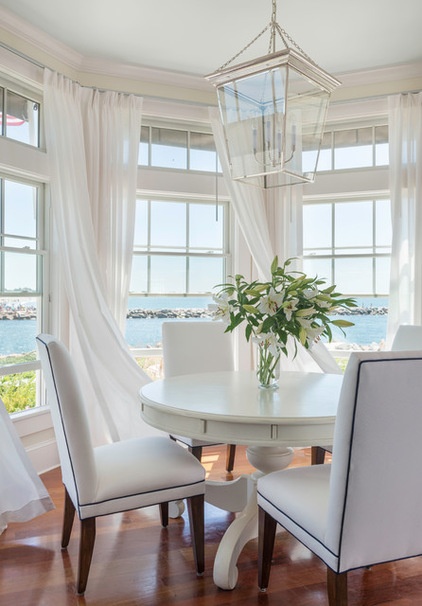
Sheers. The problem with conventional polyester sheers is that they tend to yellow and break down with sun exposure. The sheers shown here, made by Sunbrella, are fade-resistant and easy to clean. One downside is that they’re available only in widths up to 54 inches.
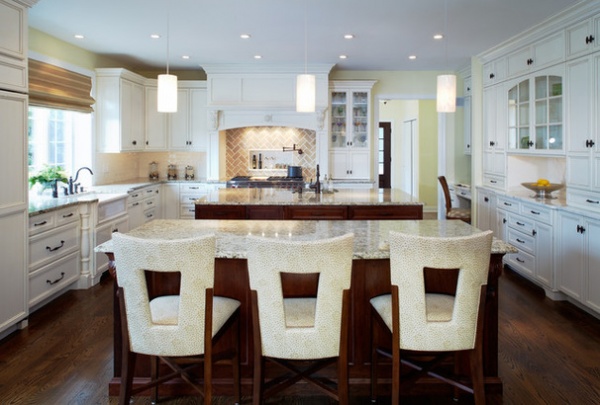
Where to Use Indoor-Outdoor Fabrics Around the House
Being the clumsy type, I’d be hesitant to put regular light-colored upholstery on these breakfast bar counter chairs. But indoor-outdoor fabric? You bet. The stain resistance of these kinds of fabrics makes them good candidates for dining chairs anywhere in the home.
Indoor-outdoor shagreen-look fabric: Duralee
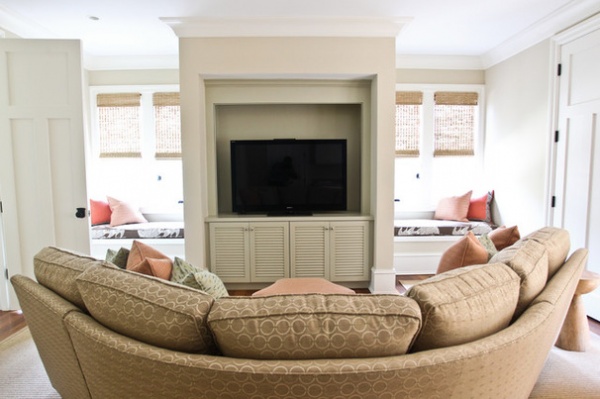
Your living room upholstery will stand up to Super Bowl snacks better if it’s upholstered in an indoor-outdoor fabric like the one shown here.
Fabric: Sunbrella
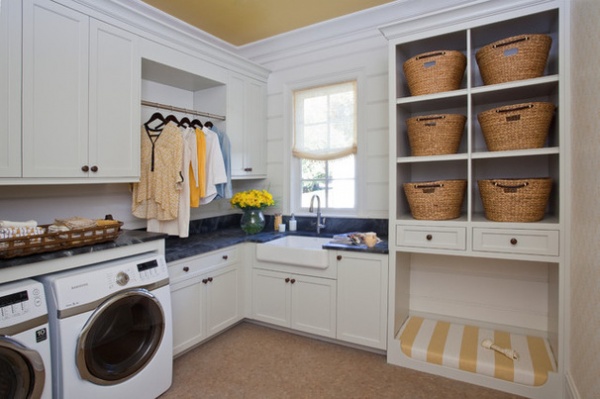
Using indoor-outdoor fabric for pet beds is another bright idea. While it’s not guaranteed to hold up against claw snagging, the tight weave makes it a great choice for homes with furry friends. Plus it’s stain-resistant, so you don’t have to worry about muddy paw prints.
Fabric: Perennials
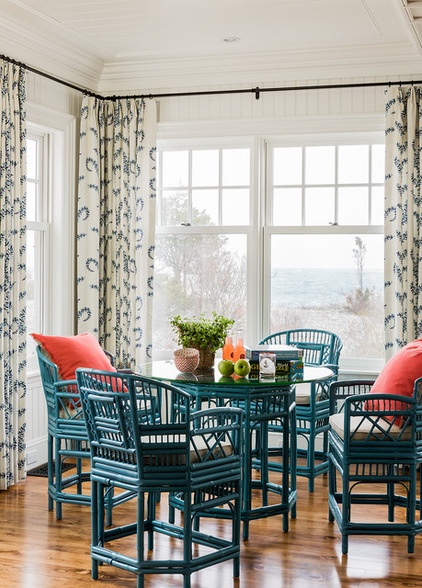
Expectations for Indoor-Outdoor Fabrics
It’s not bulletproof. While indoor-outdoor fabric is extremely durable and stain-resistant, it’s not indestructible. Ruddick says some folks expect it to be impervious to everything, but it’s not. Remember that it is fabric after all.
Fade resistance varies. The degree of fade resistance depends on the fiber and whether it’s printed or not. Ruddick says for Duralee’s offerings, expect the following lightfastness performance based on the number of hours of exposure. (Lightfastness means that the color won’t fade and the fabric will retain its original appearance when exposed to harsh environments.)500 hours for printed fabrics1,500 hours for Bella-Dura-branded polyolefin-fiber fabrics2,200 hours for solution-dyed Sunbrella fabrics
Shearer says that Sunbrella’s awning and shade fabrics have a 10-year limited warranty, and its upholstery fabrics have a five-year limited warranty. However, many homeowners are able to extend the life of their indoor-outdoor fabrics well past their warranty period with proper care.
Dye lots. A dye lot means that the fabric is dyed in the same vat at the same time. Dye lots can vary up to 10 percent in color, which is an industry standard for a commercial match. While different dye lots won’t be discernible with pillows and smaller, scattered items, larger pieces like adjacent cushion and sofa coverings may be noticeable. So, if you can, buy the fabric for your project all at once.
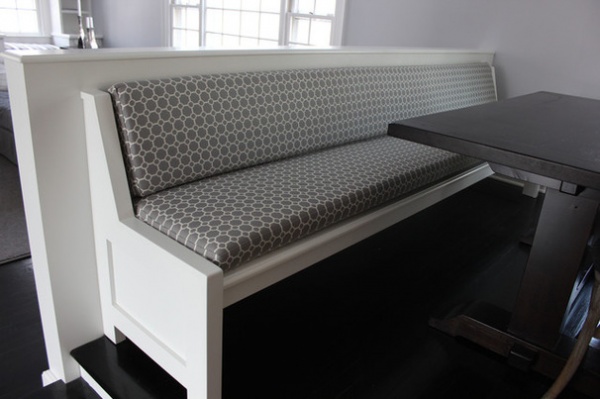
Cleaning
Some of the best attributes about indoor-outdoor fabric are its excellent stain, mold and mildew resistance, and superb cleanability. While this article covers primarily Sunbrella and Duralee indoor-outdoor fabrics, there are a bunch of others on the market. Cleaning suggestions can vary by manufacturer, so be sure to check the cleaning instructions for your particular fabric.
Surface dirt. Brush off dirt and crumbs before they become embedded in the fabric weave.
Spills and spot cleaning. Blot spills immediately; don’t rub. If left to sit, spills could possibly stain permanently. Duralee suggests using a solution of liquid hand soap and water with a generous rinse of clean water. Always air-dry indoor-outdoor fabric.
For more stubborn stains, you can machine wash removable pieces (see next image). For upholstered pieces, you can have them dry-cleaned if spot cleaning doesn’t work.
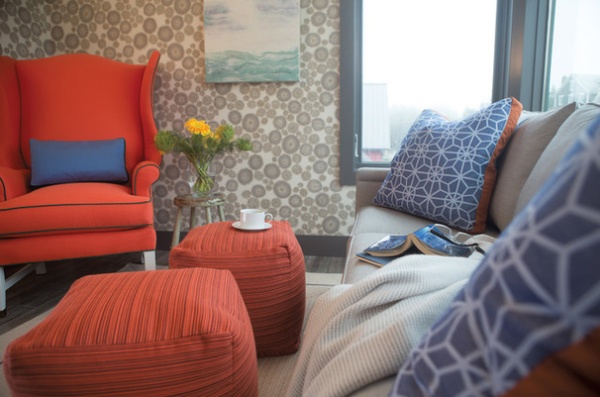
Oil-based stains. Pool cushions are likely to get sunscreen and oil-based stains, and the longer they sit, especially in the sun, the more challenging they are to remove. Ruddick says oil-based stains on Sunbrella fabric can be treated by applying an absorbent like corn starch, then removing the residue with a straight edge. Then spray on a solution of water and a mild soap, like Woolite or Dawn, and rinse the fabric thoroughly in cool, clean water.
Machine washing. Removable cushion and pillow covers can be washed at home in your washing machine. Be sure to rezip the zipper before washing to minimize unraveling and zipper accidents. Use cold water and your favorite mild detergent. Again, air-dry.
Use of bleach. Because of the solution-dyed fabric, some indoor-outdoor fabrics can even be bleached without fading because the color goes all the way through the fiber like the orange of a carrot, rather than being just on top, like a radish.
Bleaching should be used only for stubborn stains. Sunbrella recommends mixing ¼ cup of mild soap with 1 cup of bleach per gallon of lukewarm water. However, it’s a good idea to first check with the manufacturer whether your particular indoor-outdoor fabric can be bleached.
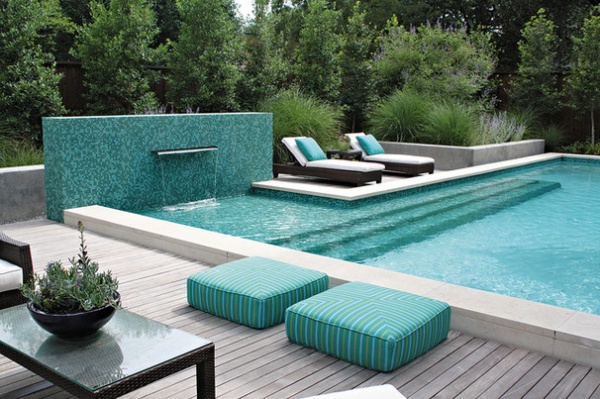
Thread Considerations
The type of thread used for stitching is one of the not-so-obvious considerations. The type depends on the usage.
Outdoor use. Sunbrella recommends using a high-UVR (UV-rated) thread that will not fade or degrade in the sun. However, Shearer says, most home sewing machines can’t accommodate the size of a UV thread spool. If you’re using regular thread on a home sewing machine, then use a polyester, not cotton, thread and make sure all of your seams are on the inside versus top-stitched to avoid direct exposure, which will extend the life of the thread.
Indoor use. Ruddick suggests a nylon thread. Nylon should not be used outdoors. Also, if you intend to bleach your piece, be aware that the thread may not be bleachable like the fabric.
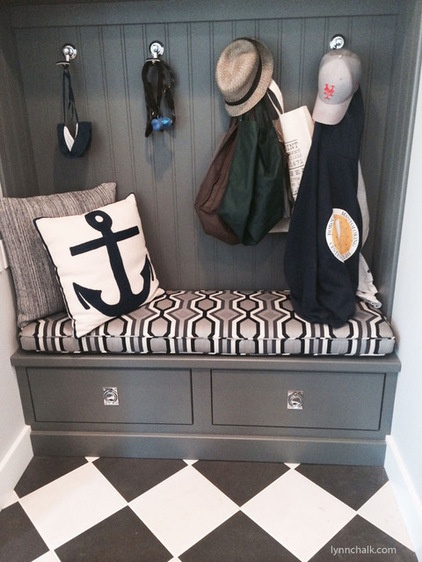
Cost
Expect to pay between $25 and $75 per yard for Sunbrella’s in-stock collection. However, many decorative-fabric houses use Sunbrella base fabric for their own company’s designs. Robert Allen, whose fabric is shown here, is one example; Duralee is another.
Duralee’s print fabrics range from $75 to $95 a yard, while wovens are a bit more at $75 to $130 per yard.
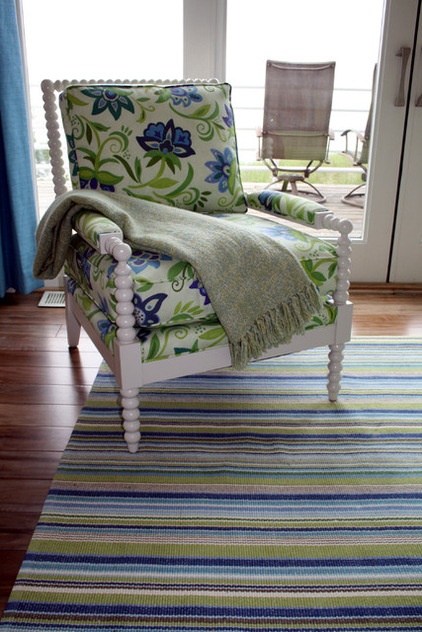
Eco-Friendly Considerations
Recycling programs. Once your indoor-outdoor fabric has seen better days, which will likely be years after you’ve bought it, you can give it new life by recycling it. Recycled fabric can end up in felt for car insulation or protective padding for sports equipment.
See more fabric guides: Chintz | Ticking Stripe | Velvet | Grain Sacks | Crewel | Matelassé | Linen | Silk | Damask | Wool | Cotton
Related Articles Recommended












